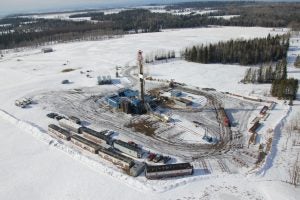 Last week, at the United Nations annual climate conference, Canada joined over 100 other countries pledging to reduce 30% of global methane emissions by the year 2030. Methane is a fast-acting greenhouse gas responsible for over a quarter of human-caused global warming. Reducing methane emissions, along with carbon dioxide, is absolutely critical to limiting global warming to 1.5 degrees.
Last week, at the United Nations annual climate conference, Canada joined over 100 other countries pledging to reduce 30% of global methane emissions by the year 2030. Methane is a fast-acting greenhouse gas responsible for over a quarter of human-caused global warming. Reducing methane emissions, along with carbon dioxide, is absolutely critical to limiting global warming to 1.5 degrees.
Canada is among the world’s largest methane emitters, and oil and gas is a significant contributor. So consequently, living up to this global commitment of 30% reduction by 2030 will have to include meaningful cuts to oil and gas sector methane emissions.
The good news is that Canada has already taken notable steps in this direction. In 2018, Canada became the first country in the world to issue national regulations targeting methane emissions from both new and existing oil and gas sources. The regulations were designed to reduce 40-45% of industry’s emissions by 2025, and since then Canada has issued an even more ambitious goal to reduce 75% of oil and gas methane emissions by 2030 – putting it ahead of all other countries in the global methane pledge.
But now comes the bad news. According to the government’s own estimates, Canada’s federal methane regulations will only achieve a 29% reduction below the 2012 baseline in 2025, instead of the 40-45% promised. In addition, just as the federal requirements will miss the target, so too will any provincial regulations deemed equivalent. Which, in turn, means achieving the 2030 goal is even more uncertain.
To add to the bad news, this summer a study of methane emissions from oil and gas facilities in British Columbia (Canada’s second-largest oil and gas producing region) revealed that emissions are anywhere from 1.6 to 2.2 times higher than official government estimates. The study, led by researchers with Carleton University, suggests companies are likely missing significant pollution sources in their reporting, and thus not adequately reducing those emissions.
Undercounting directly undercuts our ability to find and ultimately fix these invisible, yet extremely potent, methane leaks. Multiple studies have found that inventories — both in the U.S. and Canada — significantly undercount emissions, and Canada’s National Inventory should take these factors into consideration.
Canada’s path to reducing methane must be built on all available data Share on XGood data leads to effective action
The Canadian federal government is currently reviewing the efficacy of its federal regulations. This review must evaluate and adjust these regulations based on newly available data to give us a clear picture of whether or not Canada is on track to meet its goal. Failure to do so risks having to make even more regulatory changes down the road.
As it stands, all signs suggest Canada needs to dramatically strengthen its federal regulations so the 75% goal is attainable. Any changes that result from the federal regulatory review will ultimately inform the provincial regulatory reviews scheduled to occur in B.C. and Alberta in 2022. It will also require renegotiation of equivalency agreements and adjustments to those provincial regulations. Existing regulations and negotiations with provinces took more than four years to fully develop and implement, so federal regulatory strengthening needs to start as soon as possible.
Canada has the opportunity to demonstrate to the world how regulations can achieve real reductions, but only if the current review process is conducted with all available data, in a transparent manner, and resulting regulatory changes made before 2025. Whether Canada leads on making its global mark on methane reductions starts with Canada delivering on its promises. Only then will the world have confidence in the outcome.









